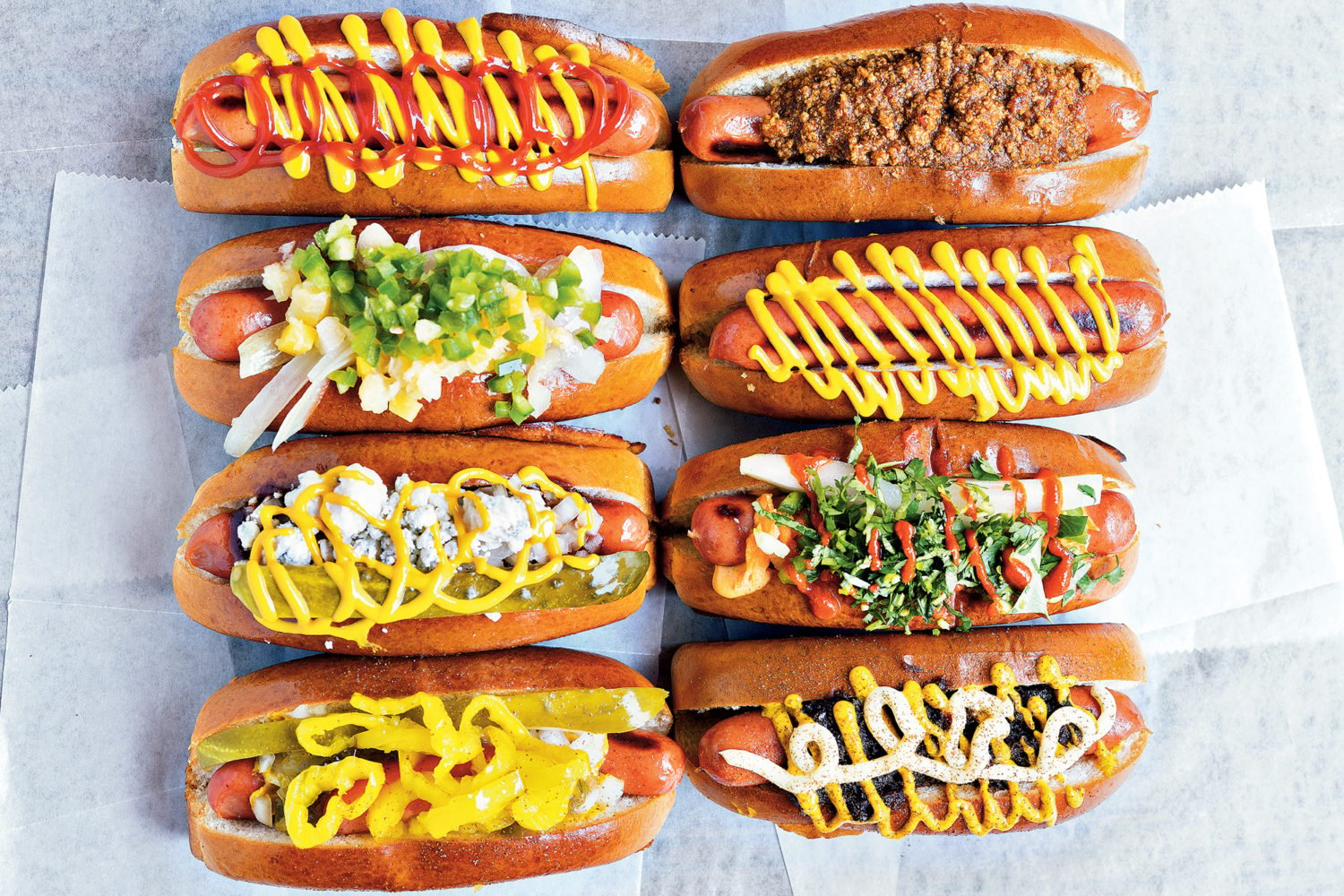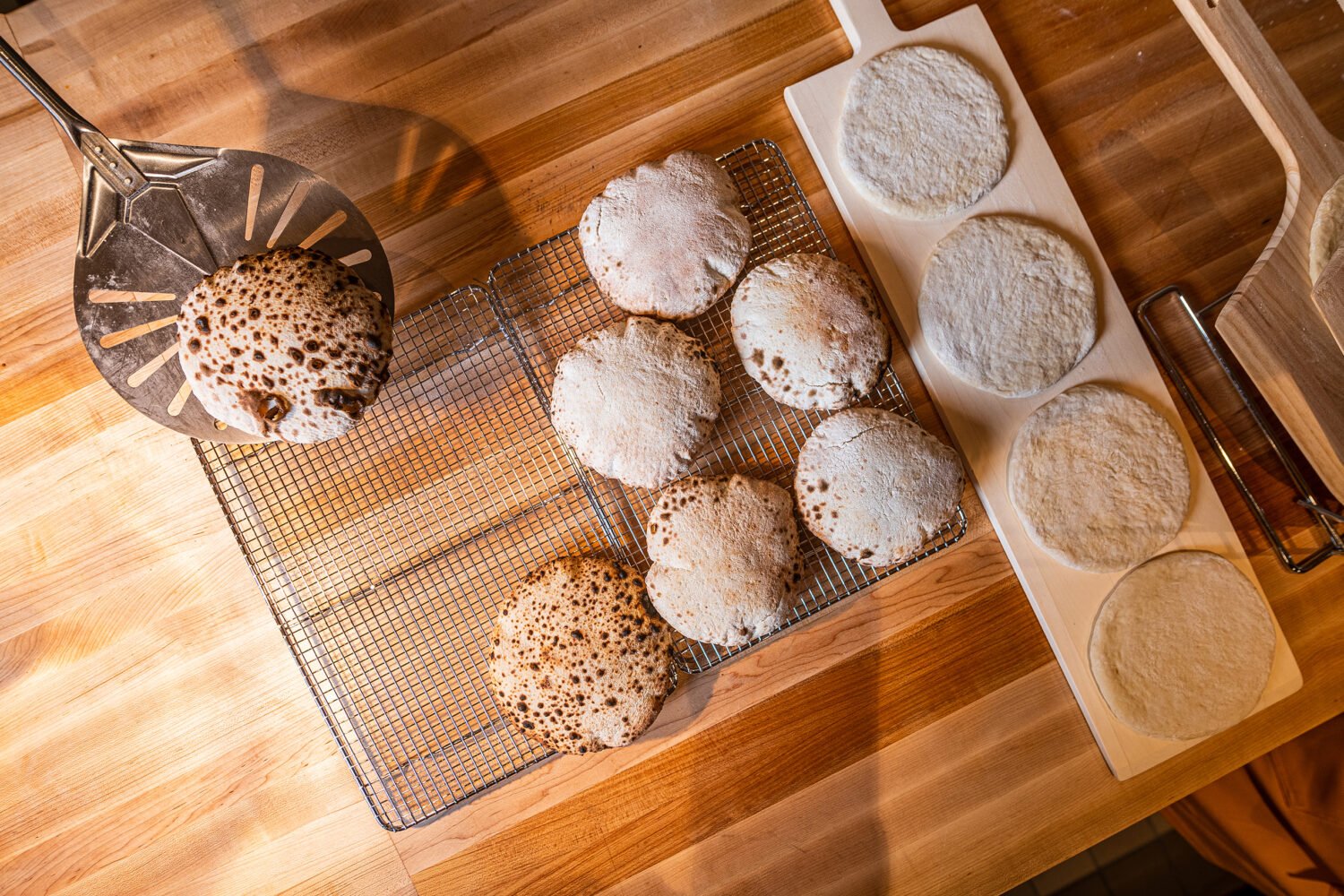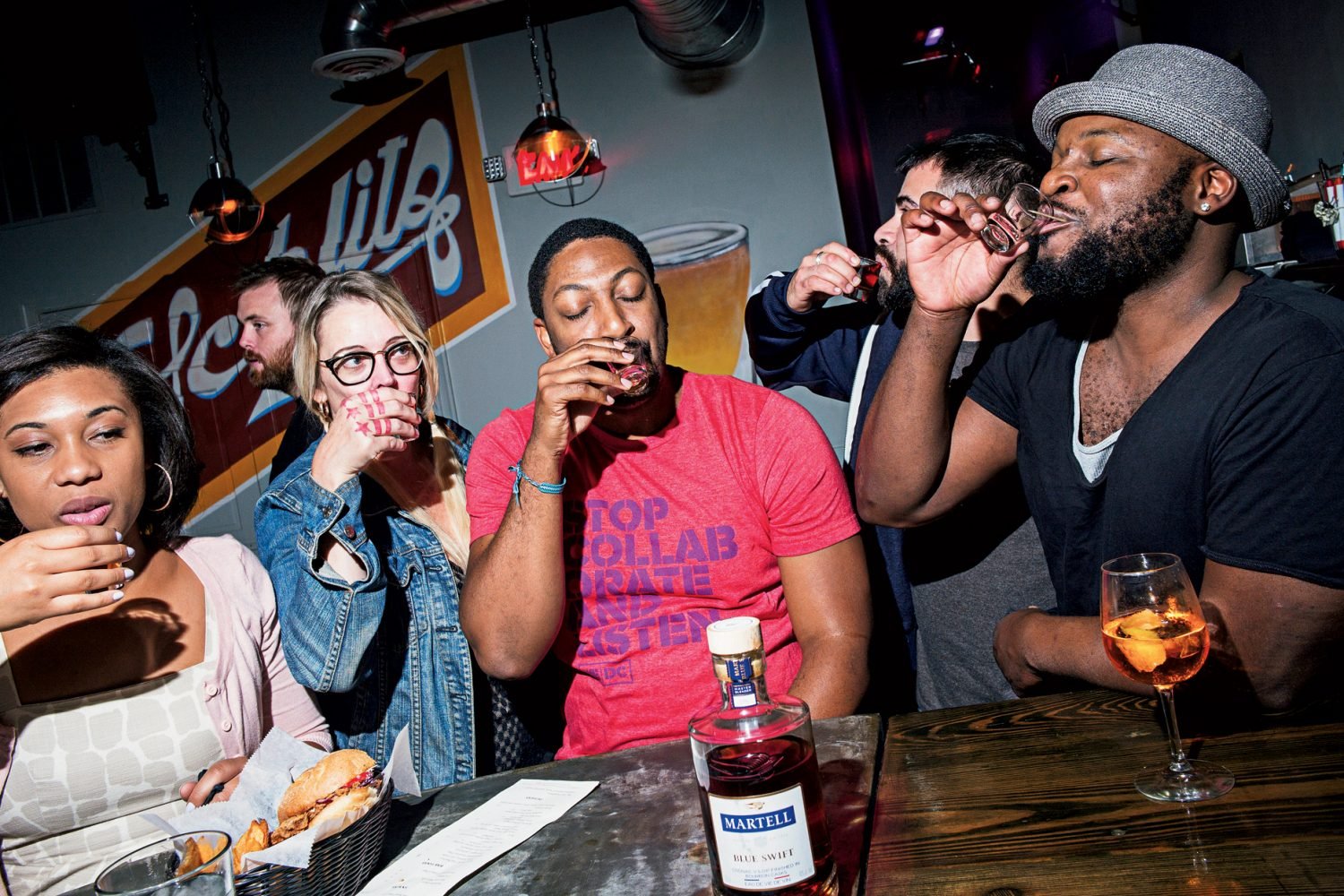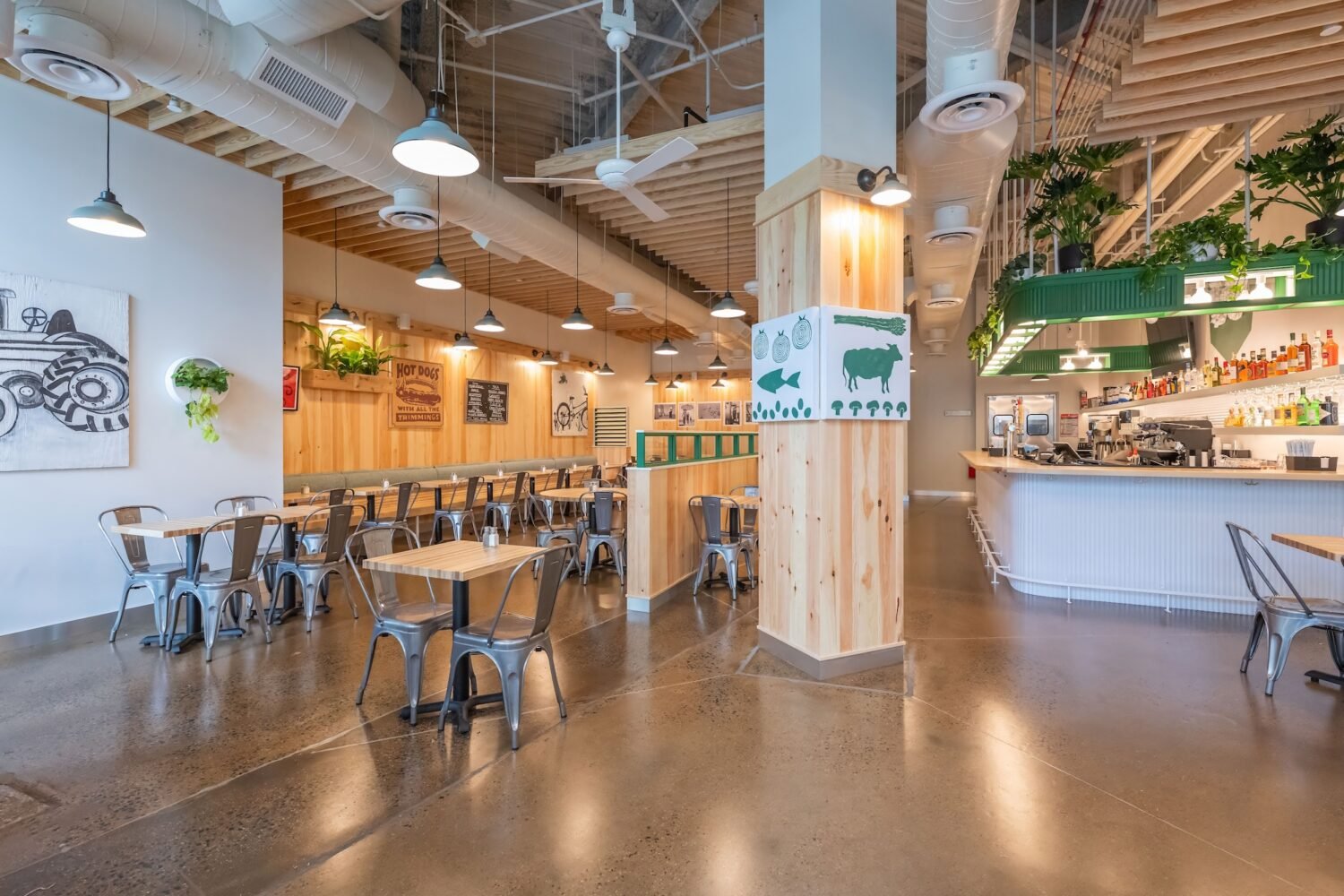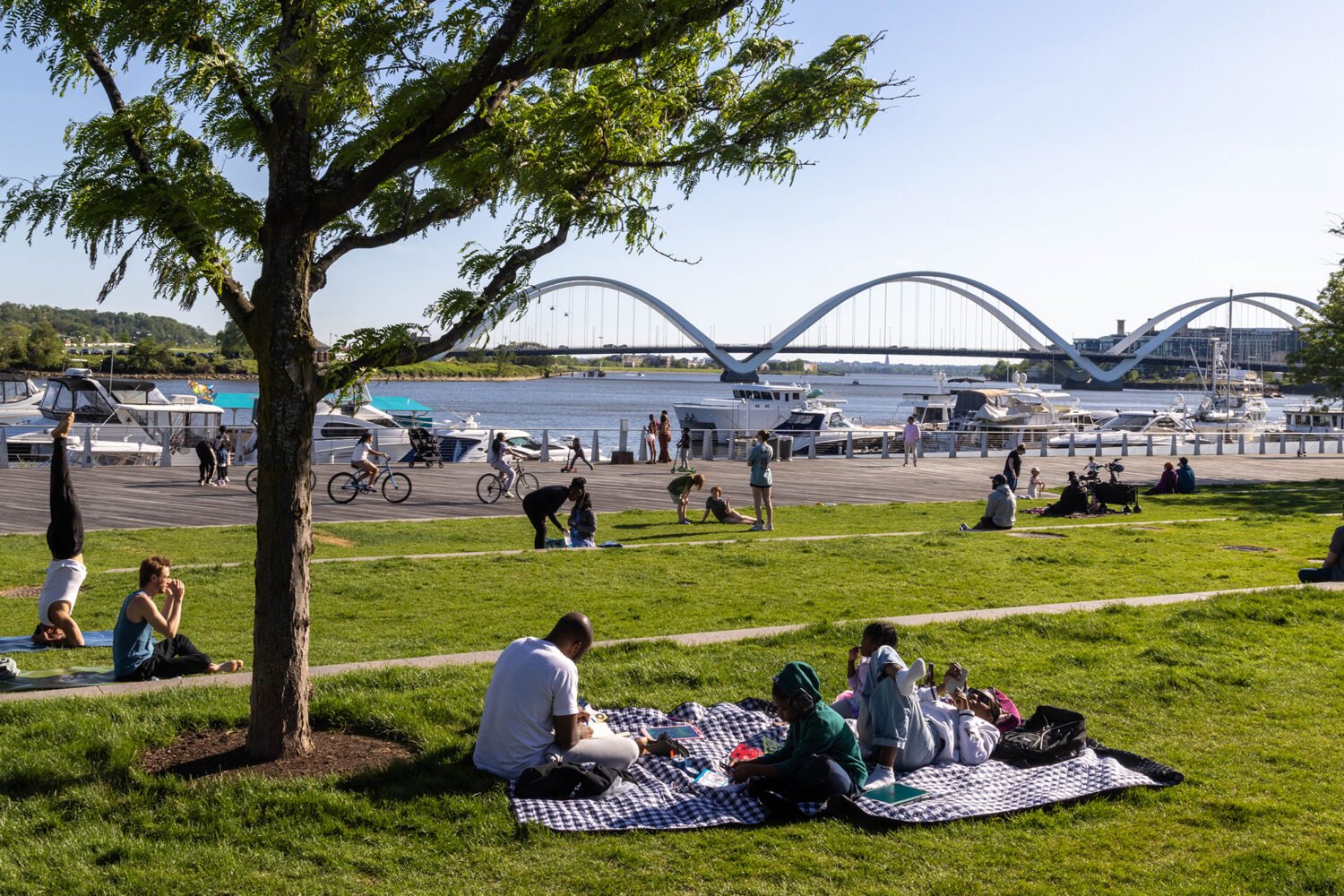The most interesting, most important restaurant to debut this year isn’t a celebrity-chef destination, a high-concept sushi bar, or a new take on the gastropub. Culinarily speaking, it’s about as safe as it gets: steaks, crabcakes, Key-lime pie. The dining room eschews the antiseptic vision beloved by designers. You won’t find pressed-tin ceilings, exposed pipes, or cement floors.
Yet no restaurant is more worthy of buzz than the politically progressive, gastronomically reactionary Ray’s the Steaks at East River, which recently opened near the East River Park Shopping Center in Northeast DC—a neighborhood few foodies have heard of, much less ventured to.
To those who have been watching the restaurant scene’s evolution over the past several years, it should come as no surprise that the man behind the venture is meat maverick Michael Landrum, whose previous restaurants are distinguished by the same characteristic: They challenge convention.
Landrum opened Ray’s the Steaks eight years ago in Arlington in a white-walled space with votive candles on the tables—the steakhouse as intimate bistro. The thick, richly marbled steaks of Hereford and Angus beef not only were better than the slabs served at the more celebrated meat palaces; they also came at a cut-rate cost. The follow-up was Ray’s the Classics, which showed Silver Spring, newly revitalized but inundated with chains, what a neighborhood restaurant can mean. Ray’s Hell-Burger in Arlington followed two years later, taking aim at the boutique burger with a ten-ounce patty of fresh-ground Angus beef that ate like a great steak but was priced—well, like a burger.
The logical move for someone with a slate of such successes would have been to expand to DC’s Penn Quarter or out to Fairfax or Loudoun County. But Landrum has always taken the road less traveled. Since opening Ray’s the Classics four years ago, he envisioned the day he would be able to leverage his name and reputation into a project of this kind—one that assails prevailing assumptions in the restaurant business. To go “east of the river” is to defy all the rules and, Landrum hopes, perhaps write some new ones.
Sociology and gastronomy seldom cross paths, and when they do, the results are generally dispiriting: Good intentions rarely translate into good eating. Landrum has worked hard to engage his new constituents—listening to community leaders’ concerns, collaborating with police to improve neighborhood security, hiring locally—but he has also minded the stove, tweaking his blueprint to meet the needs of an area where, prior to his arrival, the best restaurant was a Denny’s.
If the original Ray’s the Steaks evokes a neighborhood bistro and Ray’s the Classics recalls a supper club, the new restaurant conjures a roadhouse. Bottles of A1 are set out on the tables along with salt and pepper shakers. A tossed salad—you can have it dressed with house-made Thousand Island—inaugurates the meal. Every main course comes with a choice of two ample sides; there are ten to choose from. You can have a glass of wine for $5.
The experience is accessible and unpretentious, and the menu reinforces the theme. The steaks are thick, charred, and full of savor, and the peerless crab bisque makes good on Landrum’s claim of being a regional restaurant. The crab royale—a ten-ounce mound of jumbo lump mixed with mayonnaise, a splash of sherry, and a generous pinch of Old Bay that Landrum either cribbed from Jerry’s Seafood in Lanham or pays homage to—made the trip east, too. So did the Key-lime pie, neatly balancing sweet and tart.
There are new tastes. A thick, beer-spiked batter turns fried shrimp into something closer to shrimp fritters. The crabcake, a lightly bound, lightly sautéed patty of jumbo lump, conjures the no-fuss versions found in the stalls of Baltimore’s Lexington Market—the kind best eaten between two saltines with a can of beer; Ray’s, being a sit-down restaurant, nestles it in a soft potato roll. Even better is the fried chicken. The free-range bird is cold-smoked before being plunged into the deep fryer, resulting in a taste at once salty, sweet, and smoky. A slab of prime rib is new, too, but I found it more dry than juicy.
Landrum had more on his mind than sociology in planting his flag in Anacostia, and Ray’s is just as interesting as a gastro-cultural statement—a pointed reminder of what we’ve lost, even as we mark our great gains as a food scene over the past decade. Washington has long lacked dining options east of the river, but it also has lacked affordable dining. Chains aside, where is it possible to find simple, straightforward American cooking?
The bill at a recent lunch came to $27.90 for two entrées, two sides, two baskets of cornbread, and one of the best blueberry cobblers I’ve ever eaten. Not only are prices markedly lower than at Landrum’s other locations, but the portions are bigger. In all the meals I’ve eaten there, neither I nor any of my friends have come close to cleaning our plates.
This is more than a good value. This is a major reach-out, comparable to a top lawyer offering his services cut-rate to an underserved community. Landrum isn’t merely being responsive; he’s being generous, perhaps overly so. By e-mail he confesses he’s “anticipating losses along the lines of $5,000 a month for the first three years.” He also says he has financed the restaurant “out of pocket.”
If for some this smacks of an experiment, of political theater, it needs to be said that the experiment has implications not just east of the river but west of it, too. His latest venture is meant to engage African-Americans on the other side of the Anacostia as well as to bridge the divide between them and the wonderful dining scene that has flourished elsewhere in the region. This Ray’s stands as a fully invested effort to show the restaurant and business communities that people in black Washington want the same thing everyone else does: a simple place with good, unfussy cooking where diners of all ages can feel comfortable and where value is the biggest virtue.
The residents of Anacostia have long pleaded for more shopping and more restaurants, and community leaders hope the success of Ray’s will encourage followers and augur a new era of development. I have my doubts. Visionaries are rare, and Landrum is more lone wolf than Pied Piper. But that’s what makes what’s going on at this unexpected restaurant all the more special.


